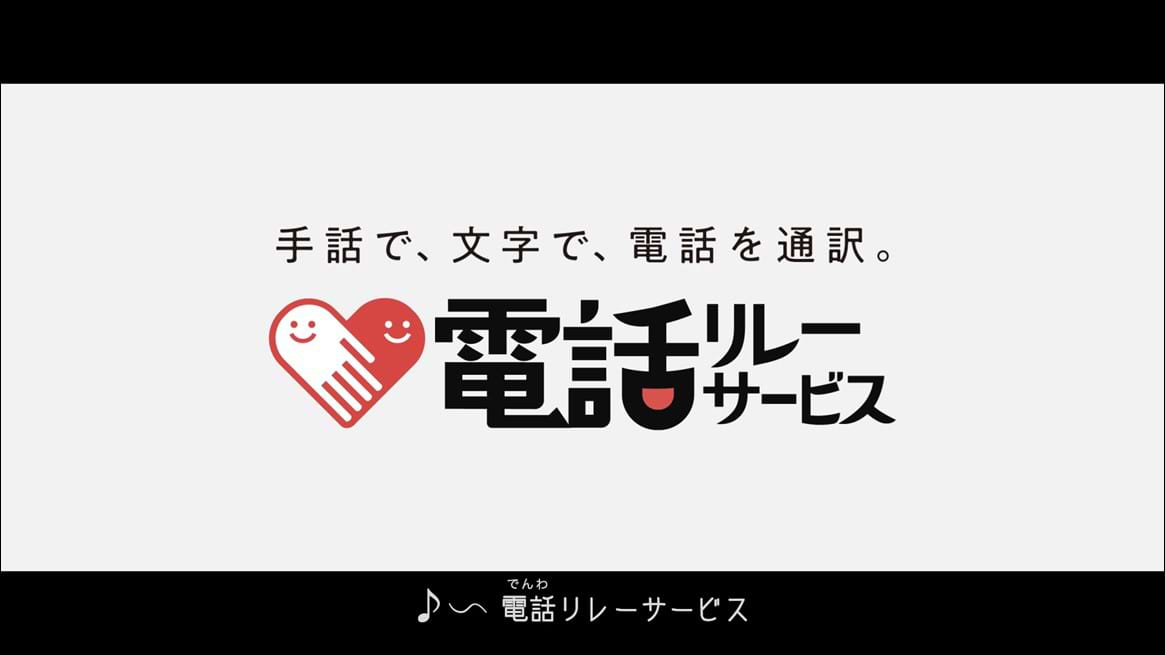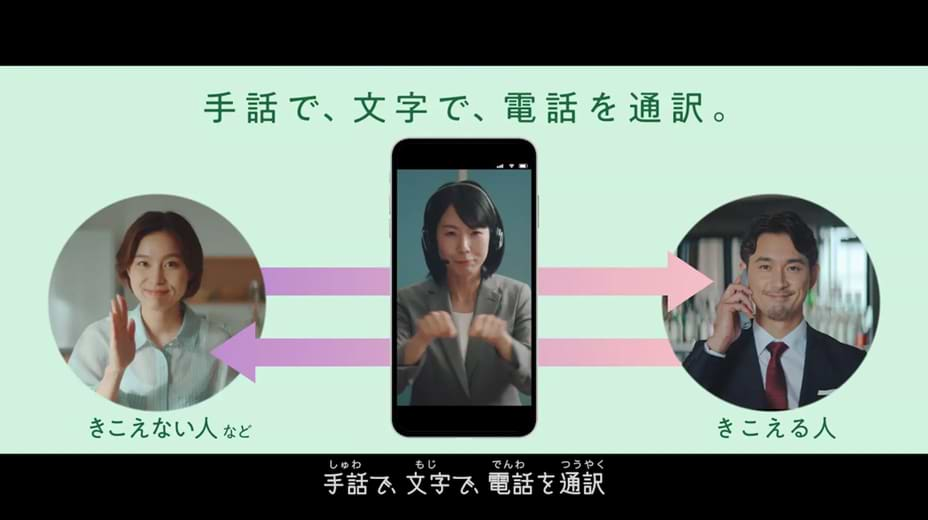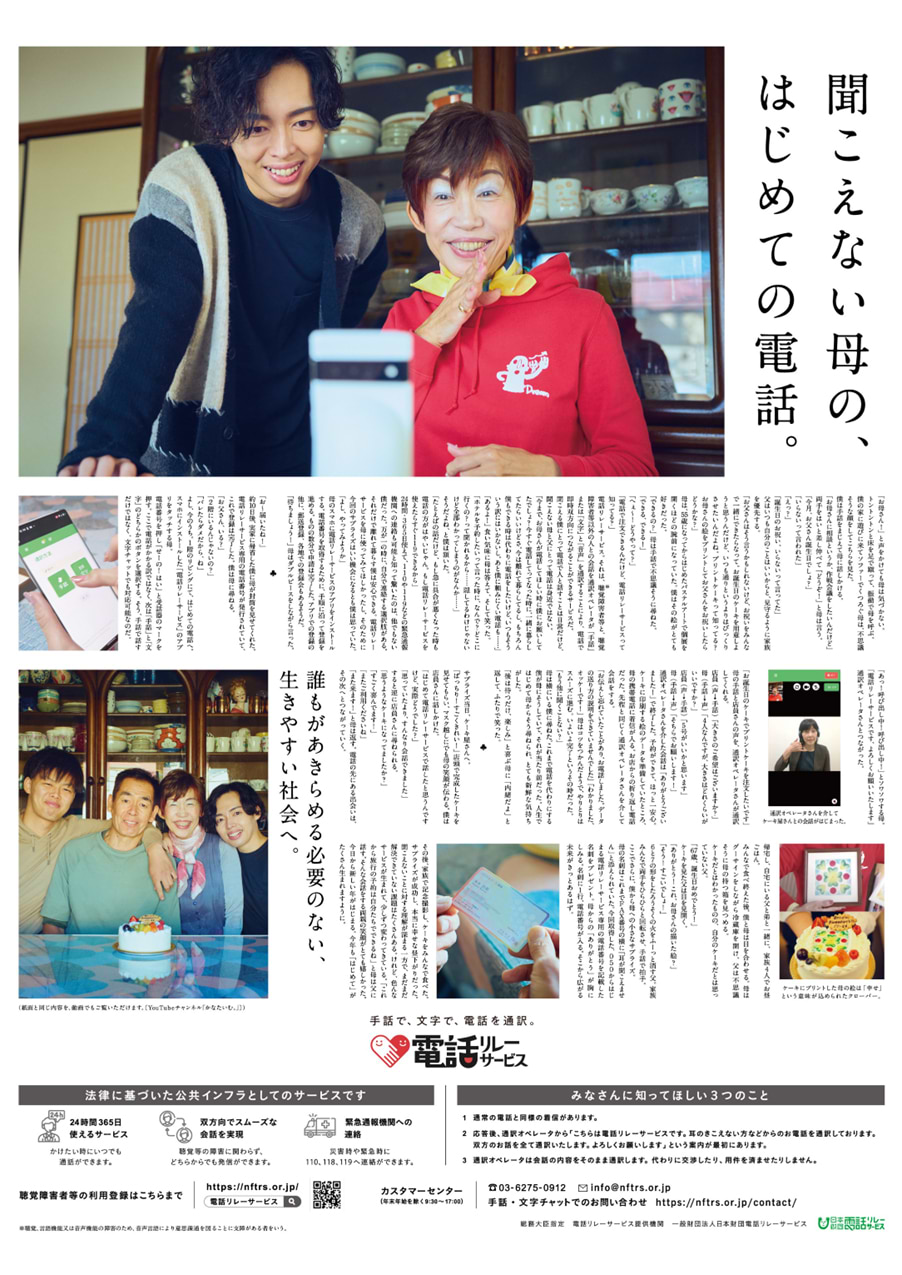
About the Service
The Denwa Relay Service (denwa means telephone in Japanese) provides a sign language interpreter to allow people who are deaf and hard of hearing or who have a speech disability, to use a smartphone to contact those who have no difficulty hearing or speaking. The interpreter communicates in sign language with the user with disability and then either types text messages to, or speaks with, the contacted person.
This legally mandated public service is provided by the Nippon Foundation Telecommunications Relay Service, a non-profit organization. The service is the result of a law designed to enable people who are deaf and hard of hearing or who have a speech disability to make telephone calls. The law, enacted in June 2020, was implemented effective December 1 of the same year.
As of February 28, 2023, some 12,000 people had registered to use the service. It is used for various reasons, such as to contact emergency services, place business calls, make hospital appointments, make reservations at restaurant and stores, contact schools and cram schools, and communicate with friends and family.

Hurdles in raising public awareness
It is more convenient for people who are deaf and hard of hearing or who have a speech disability to communicate with others using the Denwa Relay Service. Yet, launching a service like this is quite challenging.
If, for example, one receives a call from the Denwa Relay Service and has no experience in speaking with an interpreter, one might initially believe the wrong number has been called. Therefore, unless the service is widely known among members of the public, some of those receiving such calls might feel confused and hang up.
For this reason, our team at Dentsu devised ways to make the service more user friendly by increasing its name recognition and awareness of how it works.
Devising advertising strategy
For the project, we set up an advertising strategy team comprising people with advertising and production expertise. The team included: Eri Ishikawa, a general secretariat of the Theatre Accessibility network and a Dialogue in Silence guide; Mika Imai, a film director and representative director at Sando+ Co., Ltd.; Satoshi Ezoe, a representative of the Totto Foundation’s Japanese Theatre of the Deaf; actress Hiroe Ohashi; Shinsuke Shimura, a director of Dialogue Japan Society; and Karin Matsumori, a Dialogue in Silence guide and an advisor on universal design, which connects people who are deaf and hard of hearing with those who are not.
Not only for users with disabilities
A message relay service is commonly thought of as being for those who are deaf and hard of hearing or who have a speech disability. But it is actually also for those with no hearing or speech disability, a factor that was key to our plan, as those are the people who hear the interpreter introduce the call with the words, “This is the Denwa Relay Service.” Since, in our view, it was important to make more of these people familiar with the calls, we produced a catchy sound logo.
We commissioned Yoshiki Mizuno, from pop band Ikimonogakari, to compose it, and you can hear it at the beginning of the commercials and web video below.
In addition to improving name recognition, it is crucial to promote awareness of the service content and encourage people to use it. Therefore, we produced two television commercials that demonstrate exactly how the smartphone calls work.
The first commercial features a person who is deaf and hard of hearing trying the service for the first time. The second presents someone with no hearing or speech disability, who receives a call from the service for the first time and, although initially confused, smoothly handles the call.
First commercial: Deaf and hard of hearing person makes a call
Second commercial: Person with no hearing disability receives a call
The web video was produced by Kanata Kimoto for his YouTube channel, Kanataimu. In the video, he shows his mother, who is deaf and hard of hearing, how to use the Denwa Relay Service for the first time.
A newspaper advertorial about the video ran on January 1 this year, giving readers time to learn about the service in more depth during the New Year’s holiday.
The web video
The newspaper advertorial
Offering more choices
Looking back on the project, having members of the advertising strategy team produce the commercials with us employees was really wonderful. I felt that co-creation—that much discussed topic—was at the core of this project. I was happy to see social media sites with many service-related posts. Some expressed surprise about what the Denwa Relay Service does, and people who use it commented on how they had been hoping for just such a service.
By opening up new horizons, the Denwa Relay Service offers society more options: People with and without hearing loss can communicate using a smartphone. Since many individuals are involved in creating alternatives for communities, we hope to explore and expand our partnerships.
Related Link
Denwa Relay Service (Japanese language only)
Inquiries
Kotaro Abe Michio Endo (Dentsu)
https://www.dentsu.co.jp/en/contactus/

